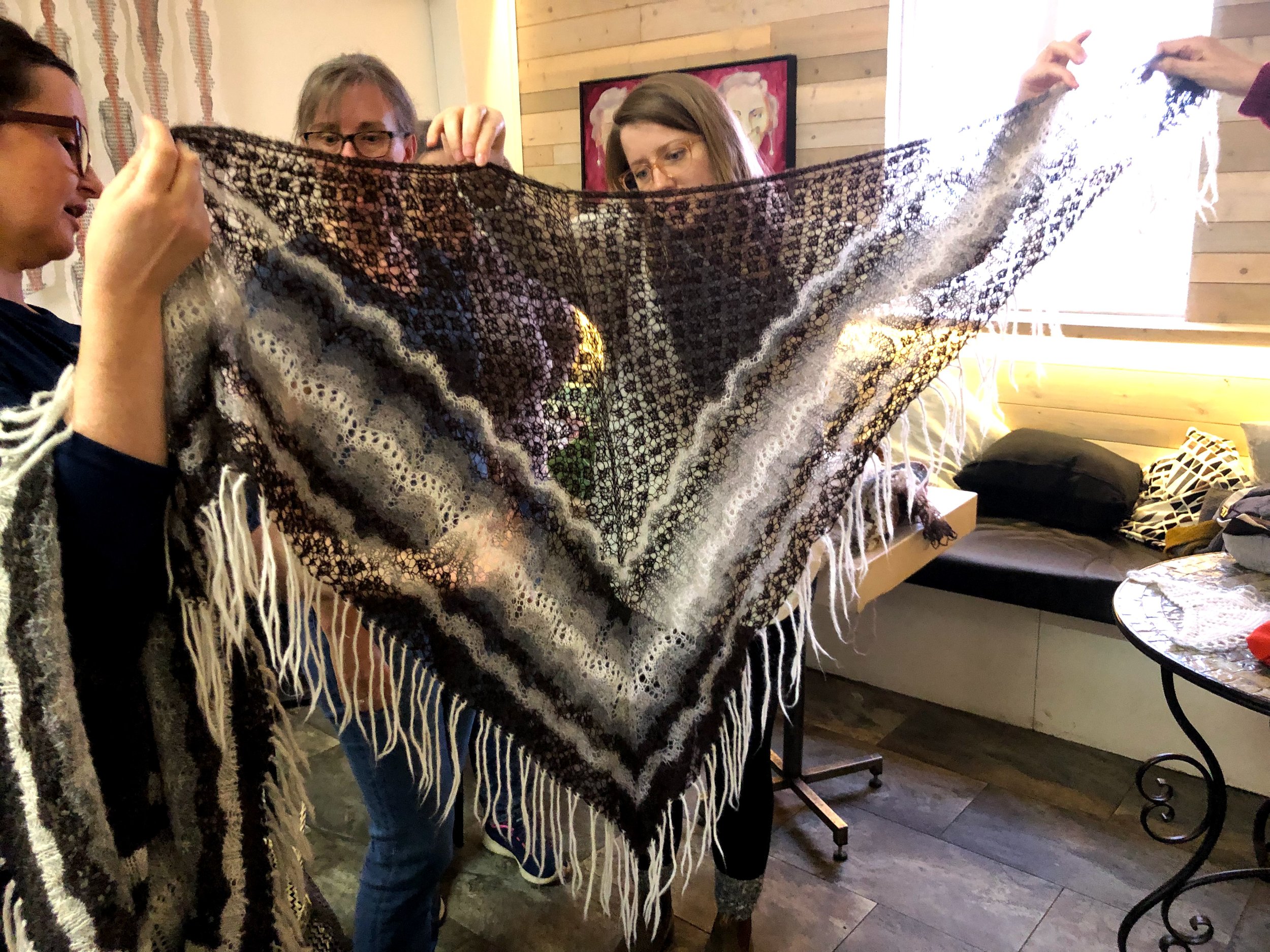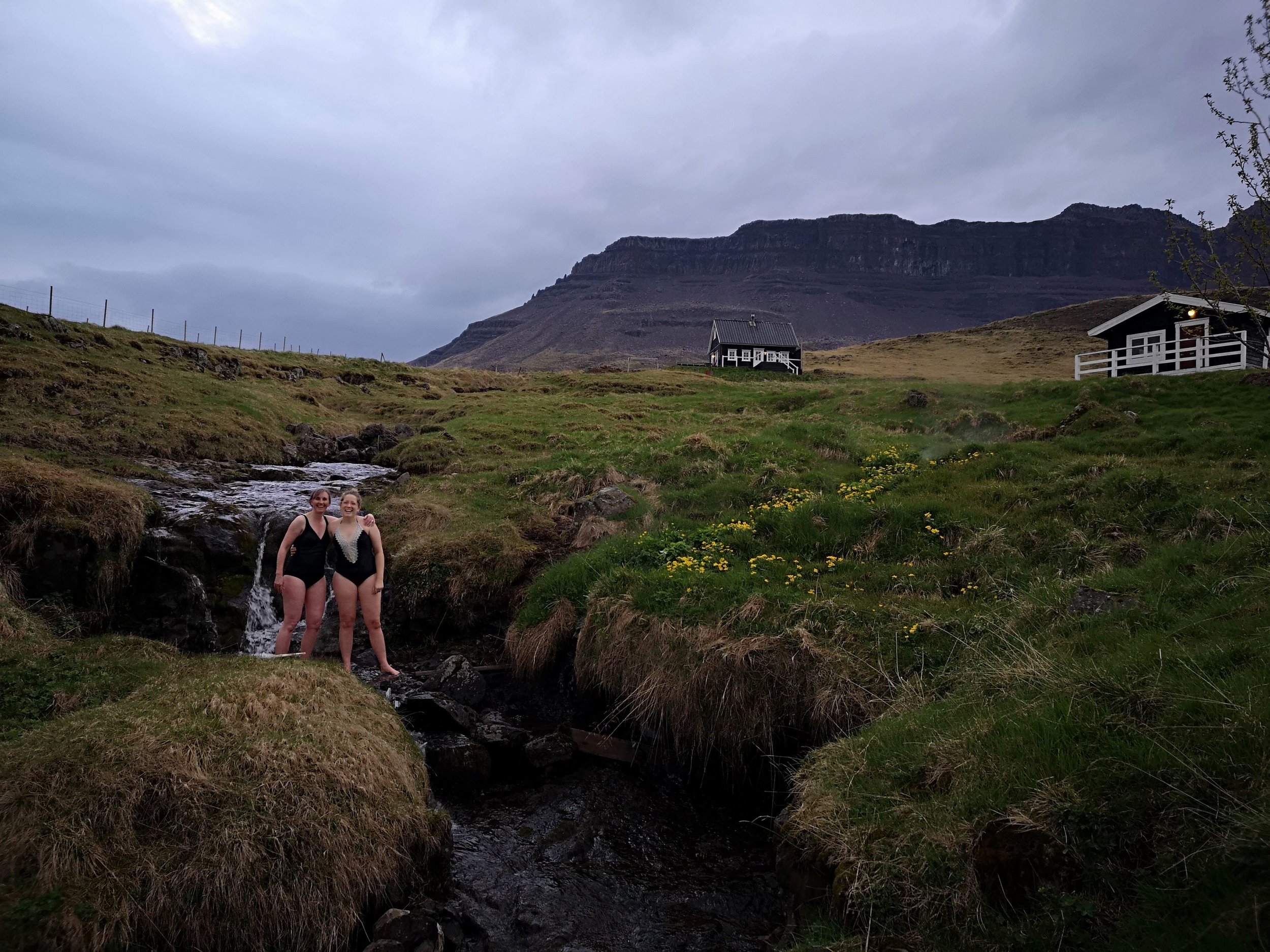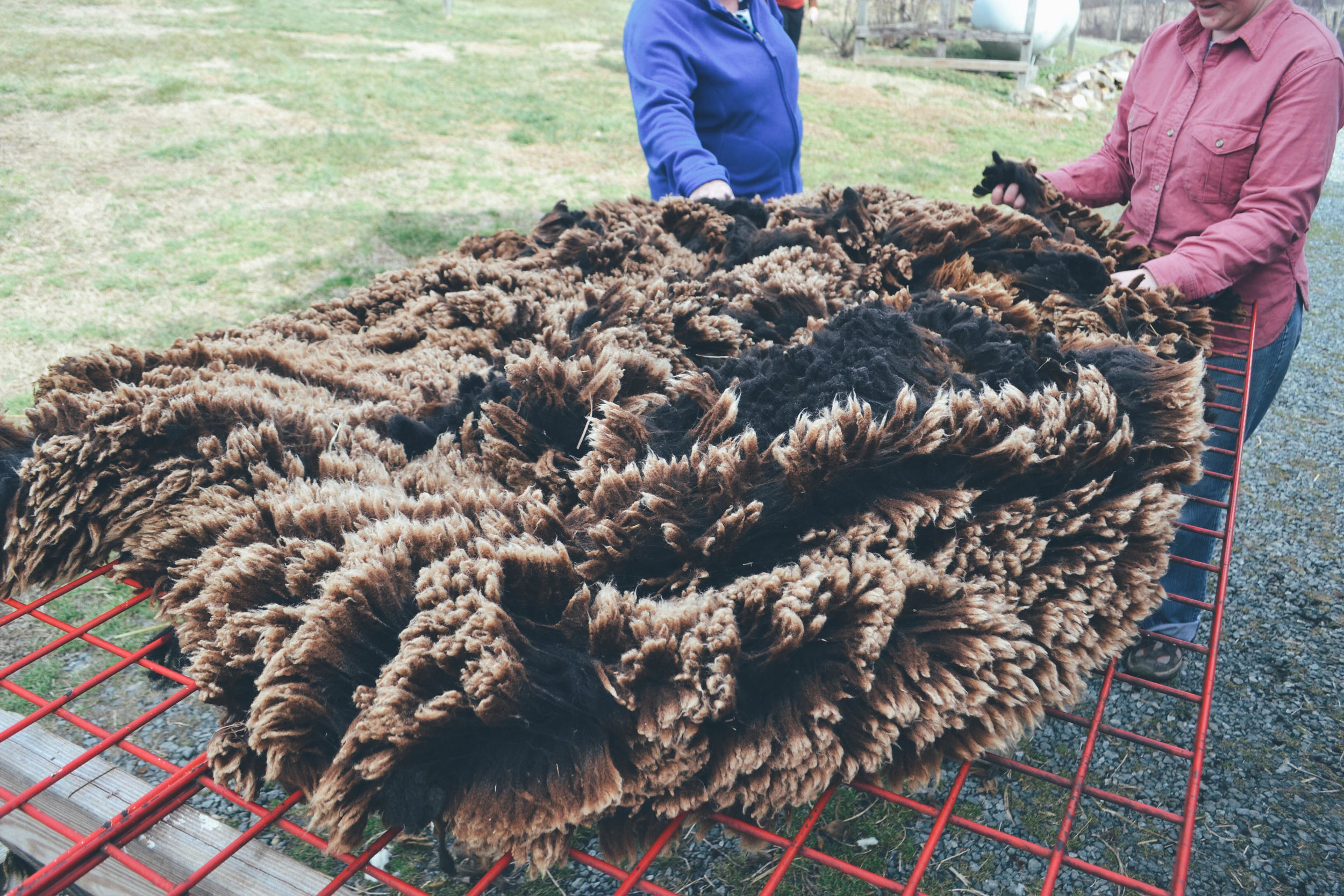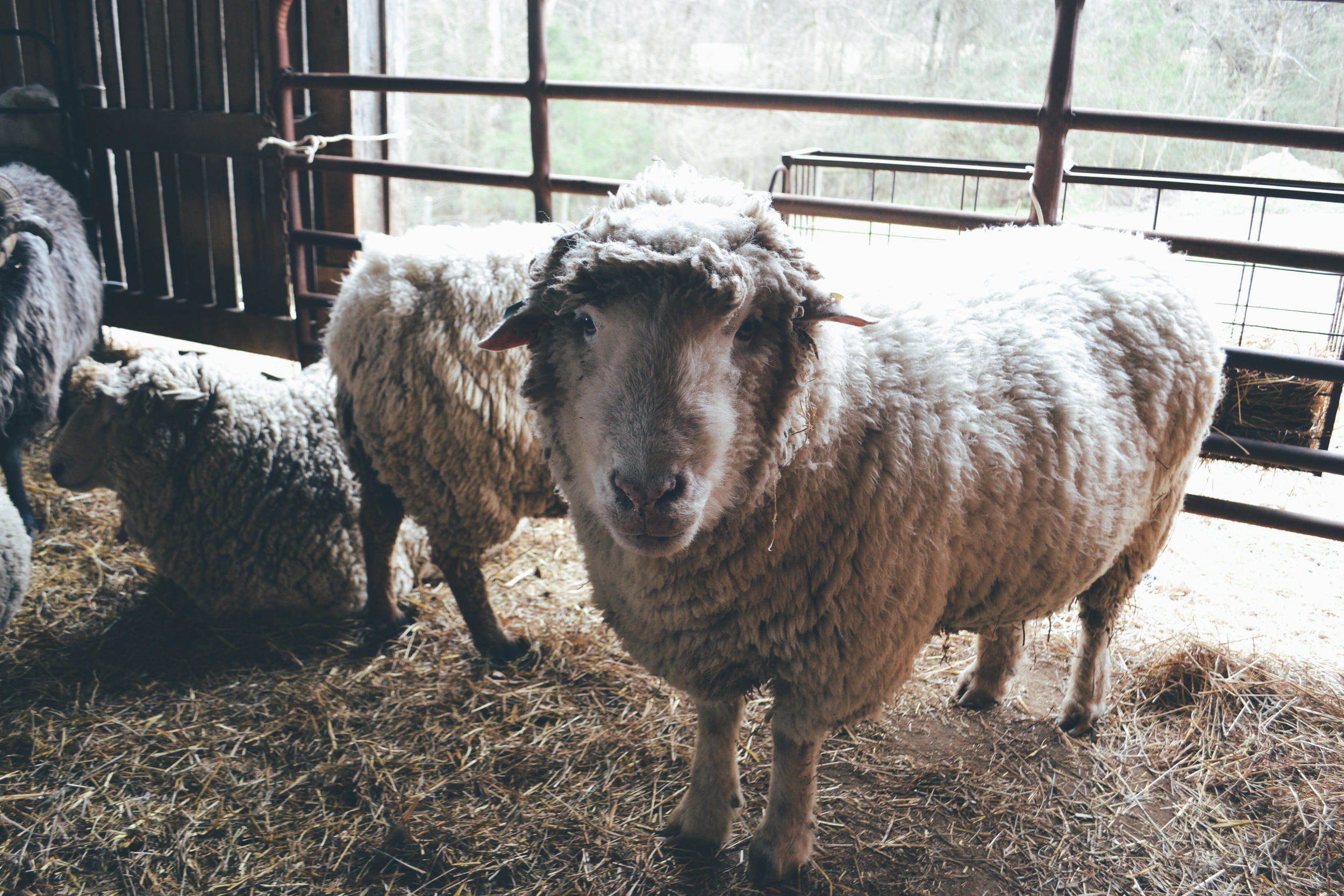
The next day, we continued our journey north. We drove on roads so elevated and narrow that in the wintertime, they become impassable, and we also learned about the unique sheep herding culture in Iceland. We passed a sheep pen which had many smaller pens inside of it, used annually by farmers. In Iceland, all of their sheep roam completely free throughout the spring and summer with no boundaries of a traditional farm, and come the fall farmers work together to round up every sheep in the countryside. Then, they meet to divide the sheep according to the farmers who keep them and ensure they stay safe for the winter. In the spring, they are shorn and released back out again to roam and grow another season.

We visited the Glaumbær Turf Farm, one of the last in Iceland of its kind, where the homestead was literally built into hills in the earth for insulation and protection, long hallways connecting rooms for every function a family would need throughout each season. Larders, kitchens, laundry rooms, sitting rooms, spinning rooms, everything was accessible through internal passageways that eliminated the need to let in the cold. I loved those yellow doors! It makes me want to paint my front door yellow, but I doubt I could pull it off as well. Everyone in the household slept in one big room in bunk-style beds which was also where much of the women’s work, spinning and knitting and braiding horse hair and all of the essential crafts occurred. On our visit, it was actually a special exhibition day where actors representing women’s traditional crafts and costumes from many different eras of Iceland’s history came together and demonstrated their skills, and how it might be like to all live and work together in one place at the farm. Seeing this unfold, I was once again amazed at the resilience, resourcefulness, and determination of the Icelandic people. Their relationship with wool was born of necessity, but grew beyond subsistence into artistry and love. It was bitterly cold by my estimation on this spring day and it gave me a whole new appreciation for their way of life.
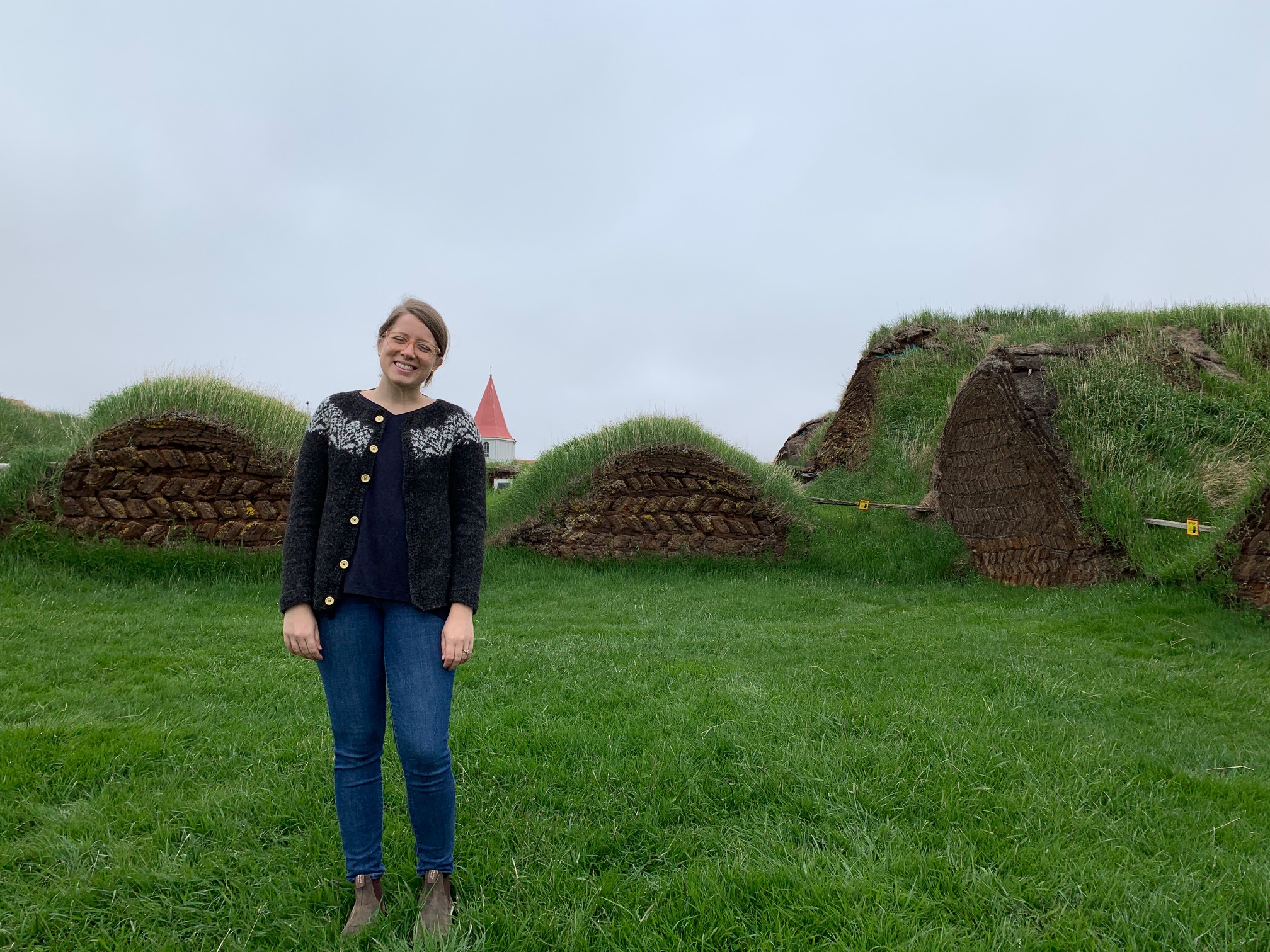 Wearing my plotulopi sweater!
Wearing my plotulopi sweater!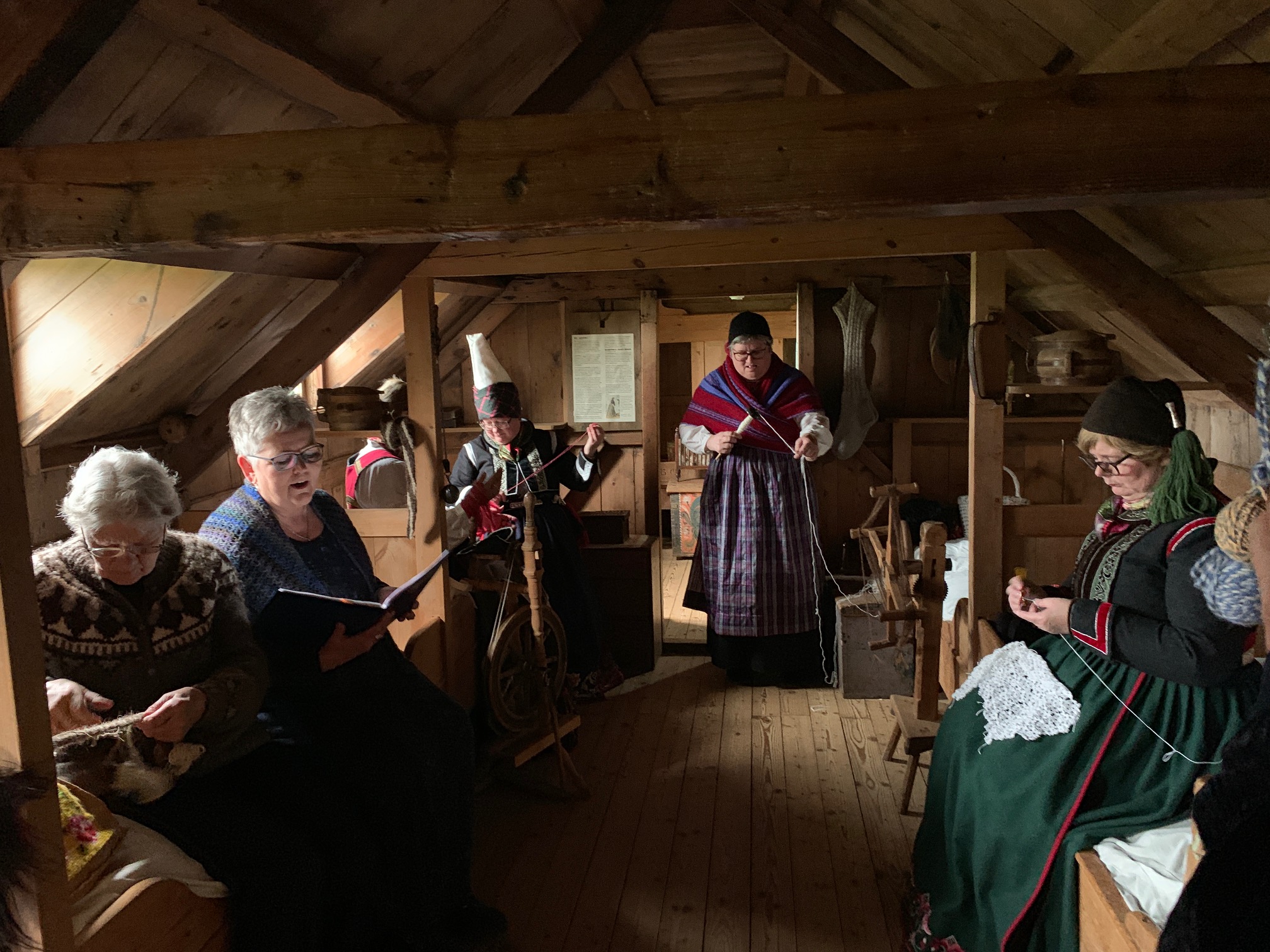
We ate lunch (salad sandwiches, pasta salad, yogurt, OJ) and finished our journey to Skagafjörður, a tiny, sweet town on the northern coast. We toured the only tannery in Iceland, if you can believe it, considering all of their sheep, and visited a local grocery store to peruse their YARN (something we were all in disbelief about) but alas! We arrived at around 3:50 PM and this grocery, in a tiny town at the top of the world, closed at 4 PM on Saturday for the whole weekend. Despite our collective disappointment, I had to smile. Sometimes it felt as though traveling in Iceland was like traveling back to a simpler time. Of course, everyone has internet, and modern amenities, they travel and go to school and do so many things like I do. But here, the grocery store closes at 4 PM for the weekend, so you better get your goods before then because this grocer is getting a Sunday off. I love that defiance to our culture of needing everything right now.
That evening, Helene introduced me to and made everyone laugh with her obsession with the Eurovision. I can’t believe I’ve never heard of this before! It was terribly awesome. The performances lasted at least 2 hours and we went to bed an hour into the judging, and they were maybe a third of the way through. Hilarious. She also demonstrated how she blocks her shawl designs and showed us an entire trunk full of various Icelandic designs and techniques for shawls. The shawls were all Icelandic in tradition but original in design, each with a unique variation and color story. Lots of undulating lace patterns, natural gradients, triangles, and lace borders.

The entire next day, we knit. Helene shared with us the basics of spider lace, a simple pattern to follow, and let us loose with a bag of yarn. I don’t think I’ve ever knit that long, with that fine of a yarn, and enjoyed it so much. Before I knew it, three hours had passed. All of us, sitting in an old church and knitting for hours. Quite reminiscent of the women we had seen crafting away at Glaumbær. We broke for lunch, coffee and to begin planning out the yarns we wanted to bring home for various projects to make sure we got them the next day (our last day), and then continued knitting until dinner. The result? By the end of the day I had made a tiny, traditional shawl, and Helene had taught me how to block the heck out of it as lace should be blocked (as in, I thought I had blocked it aggressively, but Helene saw my work, removed half of my pins and nearly doubled the size of my shawl).
One of the good, wonderful realizations that I had on this trip was that every one of us on this trip approached making in a unique way. I find it so easy to become enamored with the “things” you “need” to knit - the culture, the brands, the American way of having a special bag and a special tool for each thing. I love those things, and I love supporting makers who elevate my crafting experience. I think it’s worth it to invest in the things that make you happy. But this trip reminded me that sometimes, all you need is a cooking pot to block lace, that you can knit a baby sweater on old, straight, aluminum needles if you like, and that some knitters never use patterns. My roommate Kris was one of those, and during the week we spent together she wore a different sweater each day - completely unique, completely designed by her based on ideas that she had collected on a Pinterest board and which fit her perfectly. I don’t even think she used Ravelry. When you take away everything else, the one thing we all had in common was the act of knitting, looping wool over wool. How great is that?
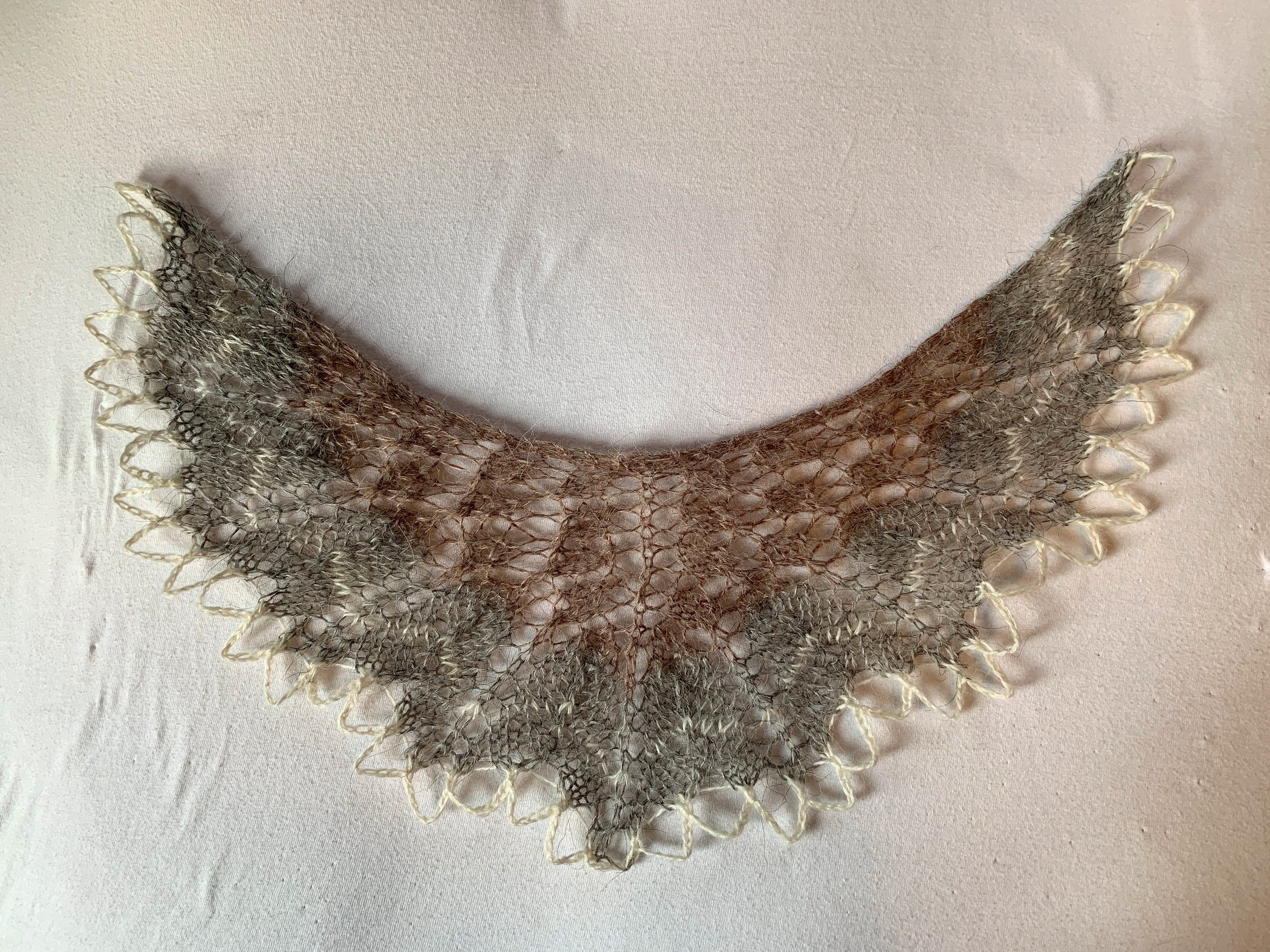 Never been so proud of something so small
Never been so proud of something so small












 Wearing my plotulopi sweater!
Wearing my plotulopi sweater!

 Never been so proud of something so small
Never been so proud of something so small
